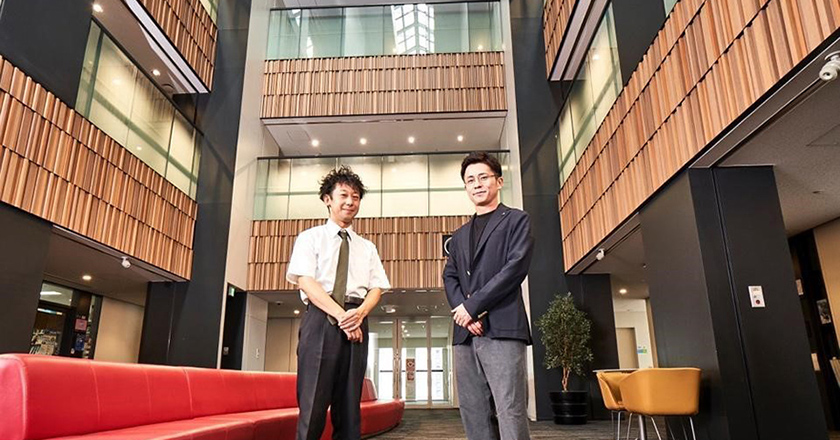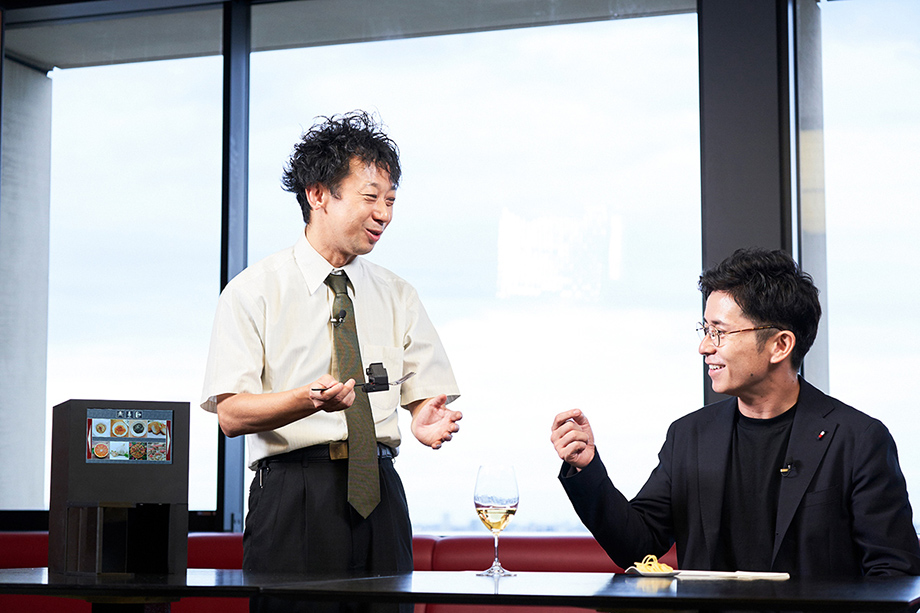
The ability to record and play back your own voice began with the phonograph, which was invented by Thomas Edison, and is now taken for granted. So, can something like this be done with food and drink? The first to make this kind of phenomenon a reality was Professor MIYASHITA Homei of Meiji University. With Professor MIYASHITA having been awarded the Ig Nobel Prize, popular entertainer FUJIMORI Shingo, an alumnus of Meiji University, visited Professor MIYASHITA’s lab. What kind of place is this lab which is a global leader when it comes to research on taste media? What kind of Surprising taste experiences did FUJIMORI have? Let’s get right to the point and have a look.…
Envisioning the Media of the future FUJIMORI Shingo was able to enjoy a Surprising taste experience in which ramen noodles turned from being bland to being delicious, white wine that turned into red wine, and pepperoncino that did not make his breath smell bad at all. The two discussed the future of media and a vision for future research while reflecting on the taste experiences in the MIYASHITA Lab.

Enriching foods through taste media

FUJIMORI: That was an amazing experience that utterly confused my tongue and brain. As you said, it really is a matter of tasting is believing. So once again, I’d like to extend to you my congratulations on winning the Ig Nobel Prize!
MIYASHITA: Thank you for eating and drinking such a lot! This Prize was an affirmation of my 2011 paper in which I suggested that we change the taste of what we consume by using Electric Taste tableware. Electric Taste is a technology that uses a very weak electric current to artificially change how we perceive the taste of food. Electric-Salt is the tableware in which the salt ramen dish you ate earlier was served and constitutes an example of the social implementation of this technology.
FUJIMORI: I was flabbergasted when the rather plain ramen seemed to take on a salty taste and became so much more delicious as soon as the bowl’s switch was turned on. This could be a gamechanger at hospitals where low-sodium food is served to patients. The idea of harnessing the power of electricity to change how something tastes is incredible!
MIYASHITA: Thank you. The truth is that the idea of Electric Taste emerged from a discussion we were having in my lab. Thirteen years later, the MIYASHITA Lab continues to lead the world with various forms of taste media in addition to Electric Taste.
FUJIMORI: If I’m not mistaken, one of those forms is TTTV. The TTTV3 demo that shows how a given food item can be changed to taste like something completely different blew me away. I mean, the white wine I drank earlier undeniably changed in taste to that of red wine.
MIYASHITA: I’m happy you enjoyed that. The fact is that the desire to create a computer that can transmit sensations of taste, smell, and touch in the same way that you can use a microphone to capture and output sounds and a camera to capture and output video footage has long existed. I myself have engaged in such research. I’m delighted that we were able to make this a reality and will continue to update you as we make further progress.
FUJIMORI: Technology that reproduces tastes can be applied to all sorts of things. For example, let’s say that there was something you can’t eat due to a food allergy. With the use of TTTV3, you could recreate the taste of that food item by deriving it from another food item that lacks the allergen in question. This is research that can save people from all kinds of suffering. I expect to see you win your second Ig Nobel Prize with taste media technology that differs from Electric Taste.
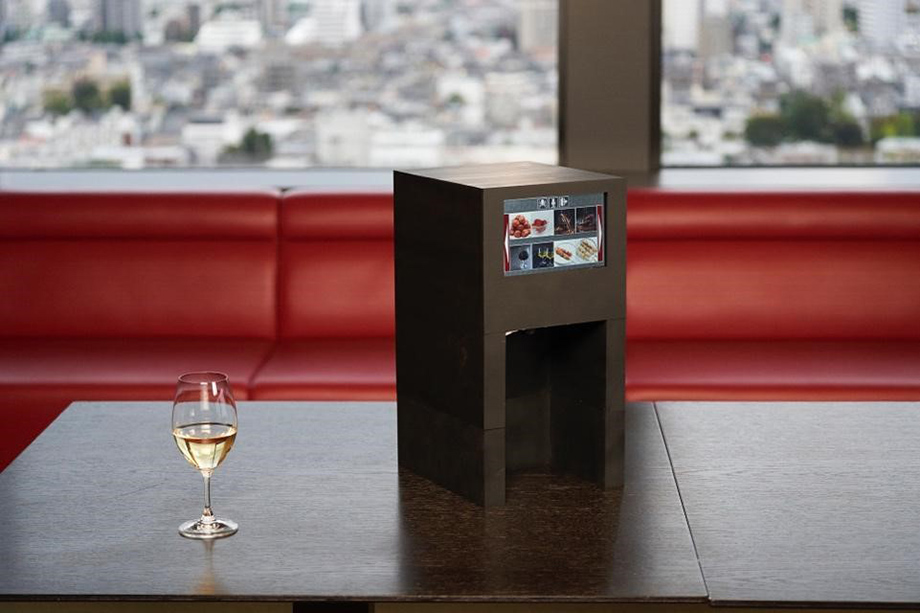
Research into bringing out the essence of craftsmanship with 3D printers
FUJIMORI: The MIYASHITA Lab is truly a world-class taste lab.
MIYASHITA: Thank you very much. It’s a common misperception but we are actually not a lab that specializes in taste. For example, we conduct research on virtual reality and on 3D printers. When it comes to research on 3D printers, we think about what we might be able to do to bring out the essence of craftsmanship.
FUJIMORI: So, you can now do that sort of thing with 3D printers as well. Cool!
MIYASHITA: That’s right. Meiji University has made quite a bit of progress in this area. This too is something that Meiji University was the first to accomplish!
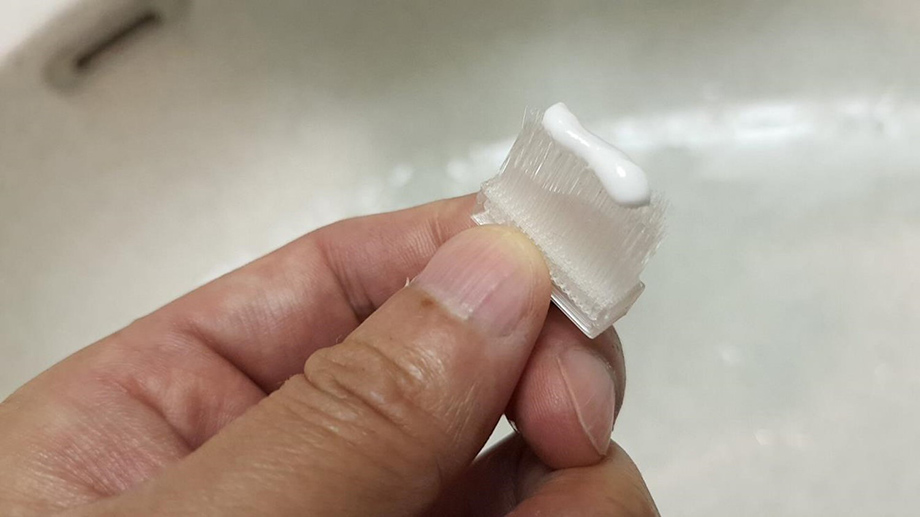
FUJIMORI: Yeah? But this is a toothbrush … isn’t it?
MIYASHITA: That’s right. These fine bristles were actually produced by a 3D printer. Of course, you can brush your teeth with this.
FUJIMORI: If anything, it seems even finer than what is commercially available. So, Professor … you actually used this yourself, I bet.
MIYASHITA: Of course. At the end of the day, it’s important that what we do can be incorporated into our daily lives. Our students also have their own 3D printers and VR devices and are using them to carry out development work at home. The computers that could only be used in a computer room in the past have now become portable tools. 3D printers and VR devices are becoming items that everyone owns. First, you should try actually using them. When you do, all sorts of ideas will come to you. That’s why, even though I haven’t gone out of my way to tell my students that they should buy these items, they end up getting their hands on them before you know it.
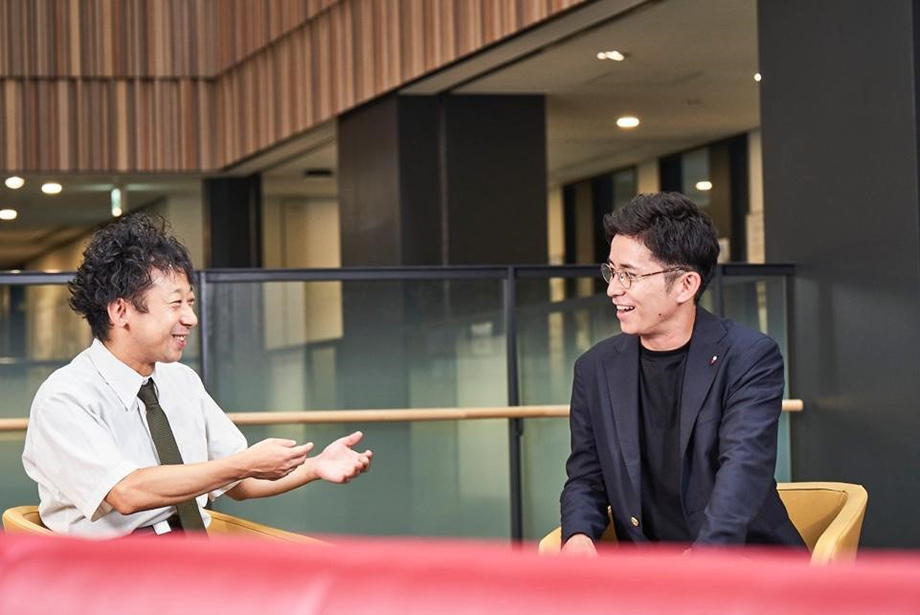
Students and their professor are researchers on an equal footing
FUJIMORI: The MIYASHITA Lab impresses me by the way all of the students appear to be having fun and are full of inspired energy. It seems you are very close to your students.
MIYASHITA: I would say that’s correct. The students who belong to the MIYASHITA Lab are like colleagues with whom I engage in new research as equal partners. They even attend international academic conferences as fellow Meiji University researchers with me and make presentations and hold discussions regardless of rank. And when we submit papers, we don’t make a distinction between who is a professor and who is a student.
FUJIMORI: I’m learning about this for the first time. Sounds like it’s the definition of joint research.
MIYASHITA: That’s right. That’s why projects begin with everyone searching jointly for a theme that we want to tackle together. That said, when I am presented with just an idea, even I don’t know from the outset whether it’s a good idea or not. We create and undergo the process together and thereby experience both successes and failures as a team.
FUJIMORI: That’s got to be massively enjoyable from the point of view of your students.
MIYASHITA: I often tell my students that a university is a place where it is okay to fail over and over again. It’s important for students to take on all sorts of challenges, fail repeatedly, and thereby accumulate valuable experience. This is how students improve their ability to solve problems on their own.
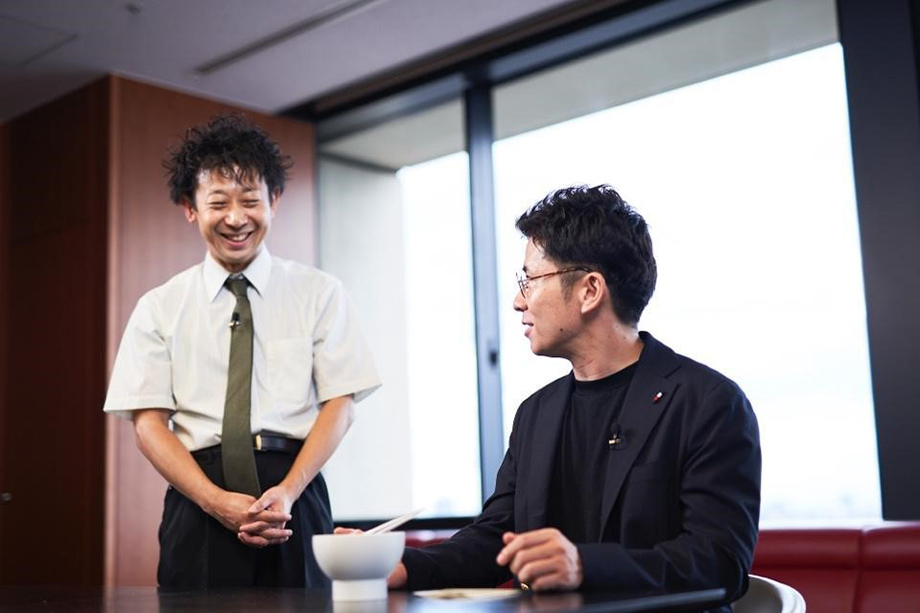
Wanting others to experience the joy of creating a future together
MIYASHITA: I am the Department Chair of the Department of Frontier Media Science in the School of Interdisciplinary Mathematical Sciences. My department is one that ponders what computers of the future will be like. Mr. FUJIMORI, can you imagine what computers of the future might look like?
FUJIMORI: Well, perhaps they’ll have a see-through display or float in the air?
MIYASHITA: You may be right. However, nobody really knows right now. That’s why we have to start by creating images. From there, we should try to figure out the right form they should actually take. The joy of creating a future together might be an experience that can only really be had at a university. This is wholly different from simply memorizing textbooks and taking tests. The results of repeated failures and trial-and-error attempts might someday, somewhere make someone happy. That kind of realization is truly mind-blowing in my opinion.
FUJIMORI: When I hear you talk, I get the sense that there are some commonalities between your world and the world of entertainment of which I am a part. In particular, the way we work together as a team to produce something in order to bring joy to people is possibly the same.
MIYASHITA: Yes, the way we work to make people happy is certainly the same. All sorts of people work in all sorts of ways in hopes of making others as well as themselves happy. This is probably true for all activities where people express themselves and probably equally as true for the research activities that we carry out right here.
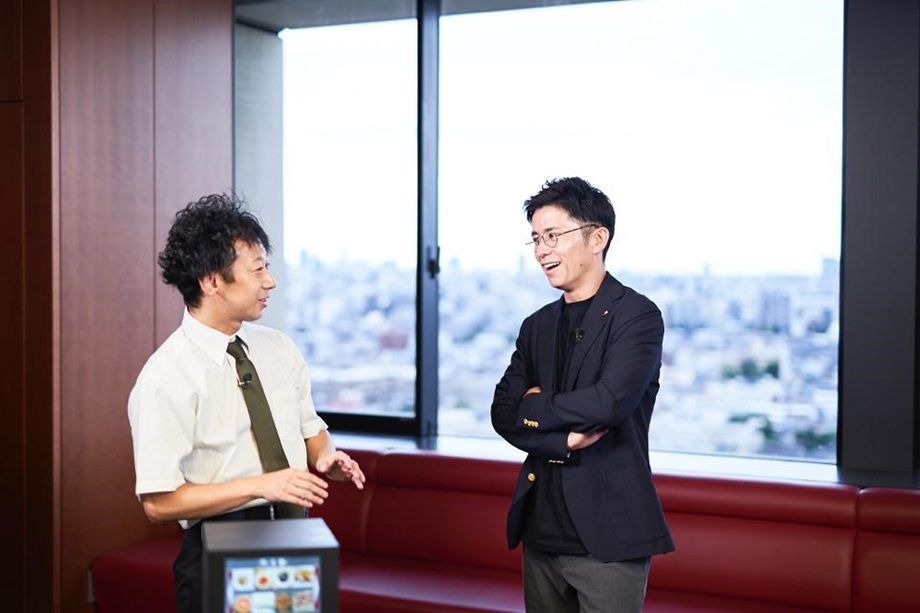
I will probably be doing something different in ten years
FUJIMORI: Professor, do you want to continue engaging in research on taste for a long time to come?
MIYASHITA: Not just that.
FUJIMORI: Oh, I see.
MIYASHITA: While I have been primarily focused on researching taste media for the last decade, I have also been doing research on 3D printers at the same time and, before that, I had been doing research on music support. My interests are continuing to expand. Of course, I realize that some people do research with a singular focus on a given topic but, since I meet students with new perspectives every year, my research areas keep getting broader and broader all the time.
FUJIMORI: So, I suppose that many things change for you whenever your students inspire you.
MIYASHITA: Yes, that’s right. Indeed, the only thing I can say with certainty is that I won’t be doing the same thing in ten years that I’m doing right now.
FUJIMORI: Is there anything you want to do research on after you’re done with taste media?
MIYASHITA: I want to pursue research on smell. When the taste of the white wine changed to that of red wine earlier when I demonstrated the TTTV3, the aroma of the wine remained that of white wine, didn’t it? Since we’re still short of where we want to be in terms of smell, that’s what I want to turn my attention to next.
FUJIMORI: It looks like it will be possible someday to make super-premium wines for which the aroma has been artificially reproduced.
MIYASHITA: I think you’re right. Research combining taste devices with AI is also being carried out. Rather than using sensors to extract taste data, the ability to use AI to produce the necessary taste data has only recently been obtained. The TTTV3 has a microphone to allow you to converse with an AI robot, which means that if I were to ask it to provide me with the taste of mammoth meat, it will come up with what it believes mammoth meat must have tasted like.
FUJIMORI: Mammoth meat, I wonder that would taste like. Can’t imagine.
MIYASHITA: If you entered an image, AI could also come up with stuff like the taste of “first love” or the taste of “a bank of clouds”. And if you were to tell the AI that the taste that has been created isn’t quite right, it will respond by coming up with something else. Through these sorts of back-and-forth interactions, it will steadily improve. I would be happy if new taste experiences provided by the TTTV3 could make people smile or make them wonder whether such a taste could be reproduced.
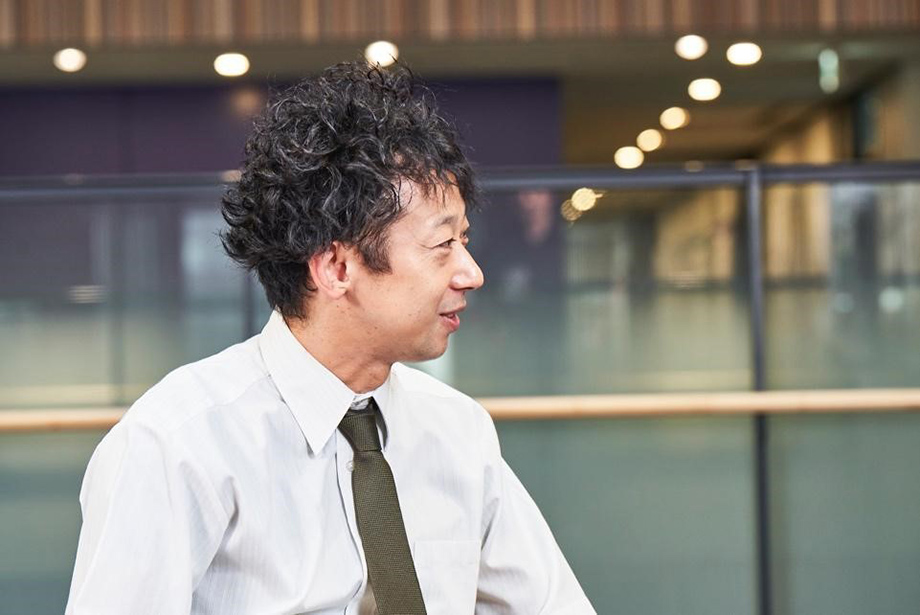
Finding and overcoming inconveniences that we are tolerating unawares
FUJIMORI: Professor, does your research fulfill our desires?
MIYASHITA: Possibly. For example, once you use a transit card or electronic money, it becomes a hassle to use tickets, bills, or hard cash again. It is only when we experience something that is convenient that we finally realize how inconvenient things used to be.
FUJIMORI: That’s exactly the case with Electric-Salt, wouldn’t you say? If you’ve been deprived of salt because you’ve been eating a low-sodium diet for the sake of your health, it can be truly liberating to enjoy the taste again.
MIYASHITA: I agree. When the age of fully automated driving arrives, cars will automatically avoid people, which means that we may see a world in which people and cars can freely move about and in which there are no longer any traffic lights. By establishing offices in the metaverse, people won’t even need to go the trouble of commuting. I believe that people in the future will look back at traffic signals and packed trains and marvel at how inconvenient it must have all been. That’s why I believe that resolving the deprivations that people are unknowingly putting up with now will become a matter of course in the future.
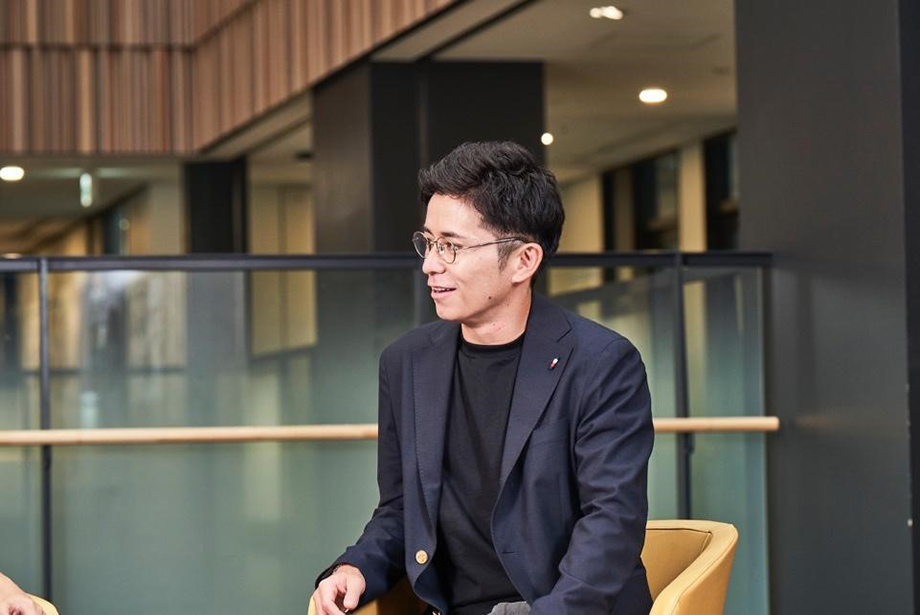
Wanting to see young people lead a varied high school life before they take on the challenge of sitting for a university entrance exam
FUJIMORI: Finally, I want you to pass on a message to those high school students who are hoping to study at Meiji University.
MIYASHITA: You can choose from among different subjects when you take an entrance examination, but I want you to realize that this doesn’t mean that you don’t have to do anything else. Whether we’re talking about music, classes on home economics, independent research, cultural and sports festivals, or hanging out with friends … such experiences can be leveraged for your research activities.
As for myself, I’m doing research on taste now, but my master’s degree was in a field related to music.
FUJIMORI: Wait, what?! That’s totally unrelated to what you’re doing now!
MIYASHITA: At first glance, that’s what anyone would think, right? I’ve also done research on a synthesizer that could create all sorts of sonic tones. This is actually quite similar to the way in which we create different taste profiles. Whether I’m adding or subtracting flavors or turning the knobs of a synthesizer, it’s all rather like carrying on a dialog through which a process of adjustments and feedback is repeated over and over again. In fact, the name of the system that is used to search for Electric Taste waveforms is TasteSynth. The waveforms I designed in my research on music are embedded in Electric-Salt. When you think about it in this way, I feel as if everything I’ve done to date is connected.
In conclusion
The Ig Nobel Prize is awarded for achievements that first make people laugh and then make them think. It appears that the MIYASHITA Lab considers this a milestone moment in its history. The backdrop to the results of innovative research that has been conducted here involves days of thorough enjoyment spent in the lab by students and professors working on research on an equal footing. We look forward to bearing witness to the future of the MIYASHITA Lab as it forges norms for a future in which happiness will be delivered to people through research.
Related link:
[Press Release] Professor MIYASHITA Homei, School of Interdisciplinary Mathematical Sciences at Meiji University and the other received the Ig Nobel Prize in Nutrition
https://www.meiji.ac.jp/cip/english/news/2023/odl2060000000d62.html
MIYASHITA Homei
Born in Florence, Italy, Professor MIYASHITA Homei is a member of the School of Interdisciplinary Mathematical Sciences at Meiji University. He majored in image engineering at the Faculty of Engineering at Chiba University, majored in music education while enrolled in a research course at the Graduate School of Education at the University of Toyama, and obtained his doctorate (in knowledge science) from the Japan Advanced Institute of Science and Technology. He assumed his post at the School of Science and Technology at Meiji University in FY2007. Since FY2013, he has been a faculty member of the Department of Frontier Media Science of the School of Interdisciplinary Mathematical Sciences at Meiji University. Professor MIYASHITA was awarded the Ig Nobel Prize (Nutrition) in 2023.
FUJIMORI Shingo
Born in Nagano Prefecture, FUJIMORI Shingo graduated from the School of Political Science and Economics at Meiji University in 2005. He founded the comedy duo “Oriental Radio” together with NAKATA Atsuhiko and in 2004 joined NSC (Yoshimoto General Comedy Arts Academy). In the same year, he became the talk of the town when he made it to the semifinal round of the M-1 Grand Prix with his musical sketch entitled “Buyuden” and became a star from the moment he debuted on the scene. He primarily appears on television variety programs. In 2016, he also participated in the NHK sponsored Red and White Singing Contest by performing “Perfect Human” as the vocalist for the musical group Radio Fish.
In addition to being a celebrity entertainer, FUJIMORI Shingo is also active as an actor, singer, and voice actor. In 2020, he launched his own YouTube channel, which has proven to be very popular. In 2021, he parted ways with Yoshimoto Kogyo to become an independent artist. He won the Best Concept Award at the 58th Japan Record Awards for “Perfect Human” (2016).
Information noted in the articles and videos, such as positions and affiliations, are current at the time of production.

